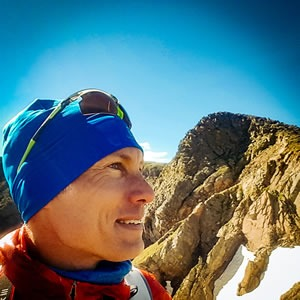A proper warm-up provides an important avenue for warding off injury. It increases blood flow to the muscles, increases the speed of muscular contractions and nerve transmissions, and enhances flexibility. The warm-up should take place prior to intense activity, and it should be tailored to the specific needs of the activity and the athlete.
With this in mind, we began to discuss a warm-up designed specifically for running. To review, the full dynamic run warmup consists of (1) neuromuscular activation, (2) dynamic stretching, and (3) the cardiovascular component. We discussed Neuromuscular Activation in Part 1 of this series. Now we are now ready to move into the second part: Dynamic Stretching.
Dynamic vs. Static Stretching
Many readers will remember a time when “warming up” involved static stretching (i.e. relaxing a muscle, elongating it and holding it for a period of time). In fact, it is still not uncommon to witness runners performing static stretches at the start of races or workouts. Yet recent research has shown that static stretching prior to exercise can actually be detrimental to the performance by weakening muscular strength. In their exercise guidelines, the American College of Sports Medicine advises against static stretching before workouts and competitions. To be sure, there is much debate around this issue; but general consensus has trended away from static stretching in favor of dynamic stretching as the best way to prepare the body for physical activity. (For more on static versus dynamic stretching, read “Stretching for the Endurance Athlete” written by Tammy Metzger, M.Ed.)
Dynamic stretching involves controlled movements that take joints through the ranges of motion that will be experienced during the coming workout. Rather than being passive (like static stretching), these movements are actively controlled by contracting muscles without forcing joints to move beyond the range they can comfortably achieve. Through multiple repetitions of the movement patterns, the muscles warm up and the range of motion is enhanced.
This article (and accompanying videos) focuses on a sequence of dynamic exercises that runners can use to warm up the muscles and enhance their range of motion. Perform each exercise for 10 to 20 meters, moving from one to the next. If you feel particularly stiff or sore, then repeat as necessary. This second phase of the warm-up need only takes 3 to 10 minutes. These exercises can also be repeated at the end of the workout as part of the cooldown. A video demonstrating the full routine is included at the end of this piece.
Dynamic Stretching / Dynamic Cool Down Routine for Runners
High Knee Walk
Begin by walking with high knees for 10 to 20 meters.
High Knee Hurdle Walk
Moving from the high knee walk, now add the hurdle component. Imagine you are stepping over the side of a hurdle as your walk. Drive with your knee and rotate around the hip joint. Do this for 10 to 20 meters.
Straight Leg Walk
For the straight leg walk, keep the leg straight and lift it up as high as you can by contracting the quads and hip flexors. As you bring your foot back to the ground, aim to finish with a slight scuffing or pawing motion. Never go to the point of strain nor force the movement. Only lift the leg as high as you can with comfort.
Backward Walk with Waist Bend
Starting in a standing position, hinge forward at the waist by pushing the butt backward. Return to the standing position, and take a half step backward with one foot. Hinge forward again at the waist. Return to the standing position, and take a half step backward with the other foot. Repeat this motion for about 10 meters to warm up your lower back and hamstrings.
Toe Walk
For the toe walk, walk 10 to 20 meters on your toes. This will engage the calf muscles.
Heel Walk
For the heel walk, walk 10 to 20 on your heels. This will engage the muscles on the front part of your lower leg (i.e. tibialis anterior).
Loosening Skips
Skip lightly while keeping your arms relaxed. Do this for 10 to 20 meters.
- Next, add forward arm circles for 10 to 20 meters.
- Switch to backward arm circles for 10 to 20 meters.
- Switch to forward arm circles with both arms for 10 to 20 meters.
- Switch to backward arm circles with both arms for 10 to 20 meters.
- Finally, open up the chest with a cross-chest arm swing for 10 to 20 meters.
Once you’ve completed the first two parts of the warmup—muscle activation and dynamic stretching—you are ready to proceed into the final cardiovascular phase. Run for 10 to 20 minutes at an easy pace with a few optional striders thrown in towards the end. The activity should elevate the heart rate and produce a light sweat.
If you are short on time, remember that the first two phases of the full warm-up need only take 5 to 10 minutes before you delve into the actual running part of the warm up. Especially if you have experienced injuries in the past, or if you run upon getting out of bed in the morning or after sitting at a desk all day, investing those extra minutes to prepare the body is time well spent. Remember, a proper warmup provides an important avenue for warding off injury.
Video Demo of Full Routine
Did you find this article helpful and want some more training and advice from Adam? Check out Adam’s triathlon, swim, cycling, and running training plans for sale on TrainingPeaks.com, or visit his coaching website at www.alpfitness.com. You can also follow him on Twitter @adamcolorado.

